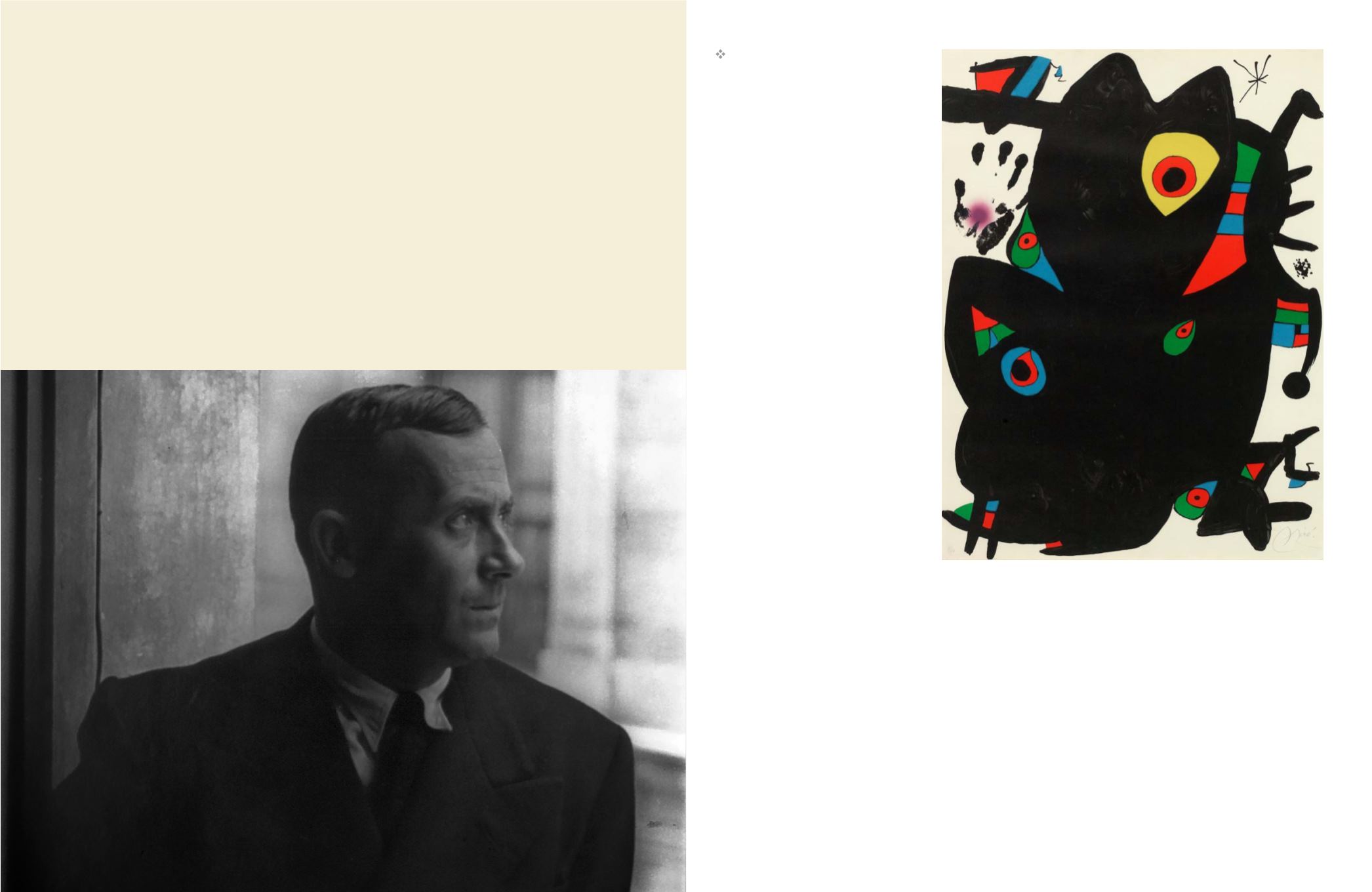

8
JOAN MIRÓ
(1893‒1983)
Montroig 2
Signed ‘Miró’ (lower right) and
numbered ‘5/30’ (lower left) in
pencil
1973
Lithograph in colours on paper
30 x 22 in (76.2 x 55.9 cm)
$ 8,000 ‒ 10,000
Rs 5,92,000 ‒ 7,40,000
This lot is offered at
NO RESERVE
Fifth from a limited edition of thirty
PROVENANCE
Saffronart, 15‒16 February 2012, lot 69
PUBLISHING
Patrick Cramer,
Joan Miró Lithographies,
1972‒1975
, Vol. V, No. 954, Paris: Maeght
Editeur, Paris, 1992, p. 91 (illustrated)
Joan Miró
Wikimedia Commons
“In my pictures, forms are both still and in motion.
They are still because the canvas is a static medium.
They are still because of the clarity of their outlines and the
kind of frame in which they are sometimes placed.
But precisely because they are still, they suggest movement…
Inside large forms, small forms move.
And, when you look at the whole picture, the large forms
become mobile in turn.
You can even say that, while keeping their autonomous life
and without changing, they jostle one another.”
JOAN MIRÓ
A seminal figure in 20
th
century avant garde painting, Joan Miró was often associated with a number of artistic movements—
from Surrealism to abstract expressionism—but maintained a visual vocabulary that was uniquely his own. The Catalan artist was
known for a symbolist style comprising of biomorphic forms and geometric shapes. He began experimenting with lithography
in 1929 , and the interest grew to be a lifelong one, as seen in the present lot.
The subject of the present lot, the Spanish town of Mont‒roig, was a constant source of inspiration and refuge for the artist.
Miró first visited it in 1911 with his parents, staying at a farmhouse they had just bought, and he would invariably spend every
summer there until 1976. The farm, the labourers who worked on it, and the surrounding landscape were recurrent themes in
his paintings. Mont‒roig was among three landscapes–along with Barcelona, where he was born, and Mallorca, his adoptive
home—to which Miro had formed a deep sense of attachment, and where he painted several of his important works. In his own
words, “All my work is conceived in Mont‒roig.”
22
23


















